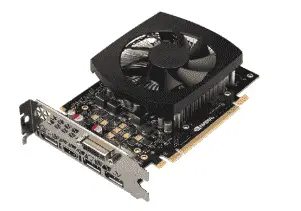The expansion cards are electronic circuits that add specific ability to a computer system. From HDMI to VGA, DisplayPort to DVI, these wizards enable diverse displays to connect seamlessly, revealing stunning visuals on any screen.
What is a Video Card?
A video card, also known as a graphics card or GPU (Graphics Processing Unit), is a hardware component that handles the rendering of images, videos, and animations for display on a monitor. It offloads this work from the CPU, making graphics processing faster and more efficient—especially in gaming, video editing, and 3D design.
1. Functions of a Video Card:
Graphics cards allow computers to produce graphics and images more quickly. A graphics card has its own processor, a GPU or graphical processing unit, according to Jason Cross at PC World. The video card connects to the motherboard and the monitor. This allows the card to accept information from the CPU (central processing unit) and send output to the monitor.
- Renders graphics: Converts data into images for the display.
- Processes visual effects: Handles textures, lighting, and shading.
- Supports multiple monitors: Allows connection of several screens.
- Accelerates video playback: Helps in HD and 4K video rendering.
- Improves performance in games, design software, and AI tasks.

2. Types of Video Cards:
Graphics cards have different types of connectors for connecting to a computer’s motherboard. A PCIe (Peripheral Component Interconnect Express) connector appears on most modern computer graphics cards. AGP (Accelerated Graphics Port) connectors remain somewhat popular, but the latest computers no longer use this technology. Most graphics cards no longer use simple PCI (Peripheral Component Interconnect) connections, as PCIe allows a faster communication speed.
- Integrated Graphics – Built into the CPU or motherboard. Suitable for basic tasks like web browsing, office work.
- Dedicated Graphics Cards – Separate units with their own memory (VRAM). Used for gaming, creative work, 3D rendering.
- Workstation GPUs – Designed for CAD, 3D modeling, and AI (e.g., NVIDIA Quadro, AMD Radeon Pro).
- External GPUs (eGPU) – Enclosed graphics units that connect via Thunderbolt or USB-C to laptops.
3.Common Sizes of Video Cards:
- Single-slot: Slim cards, used in compact PCs.
- Dual-slot: Standard size, requires two back panel slots.
- Triple-slot or larger: High-end GPUs with large coolers for advanced gaming or workstation tasks.
Physically, cards can range from short (mini cards under 6 inches) to long (over 12 inches), depending on the model and cooling design.
4. How a Video Card Works
- Data Input: The CPU sends rendering instructions (like what to display) to the GPU.
- Processing: The GPU rapidly processes this data using thousands of small cores to handle parallel tasks (shading, lighting, geometry).
- VRAM Use: Temporary image data is stored and accessed in VRAM for quick reading.
- Output: Final image is sent to the display via HDMI, DisplayPort, or DVI.
It uses APIs like DirectX, OpenGL, or Vulkan to communicate with games and applications.

